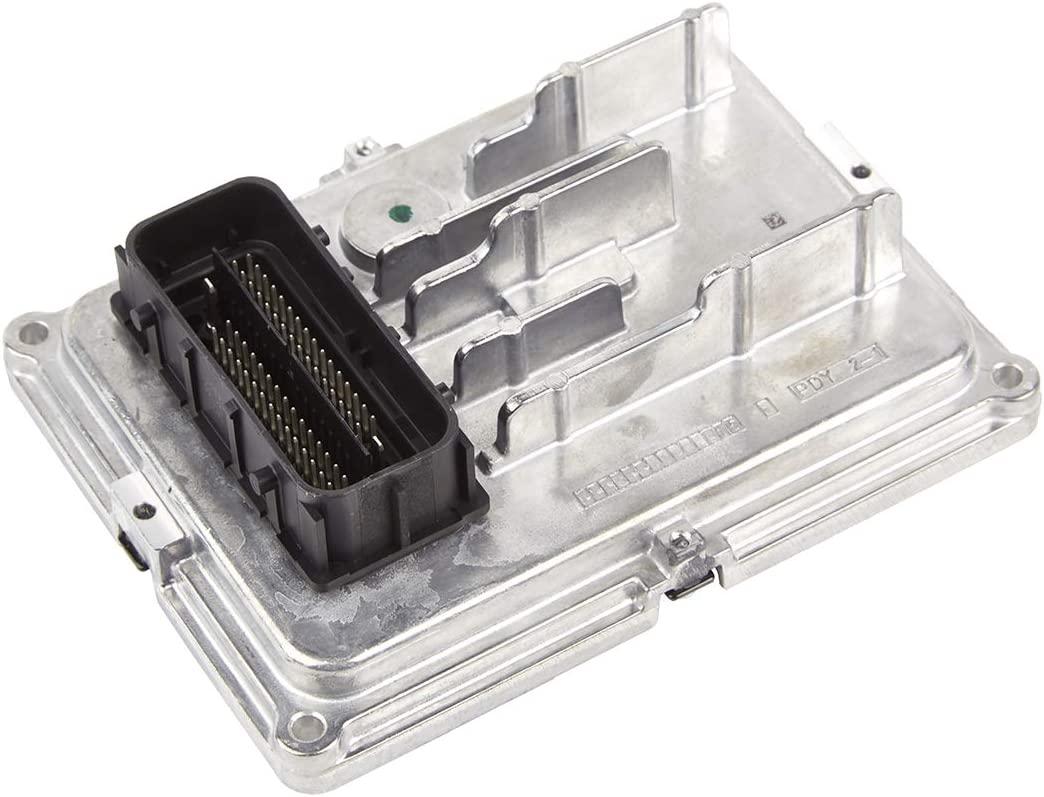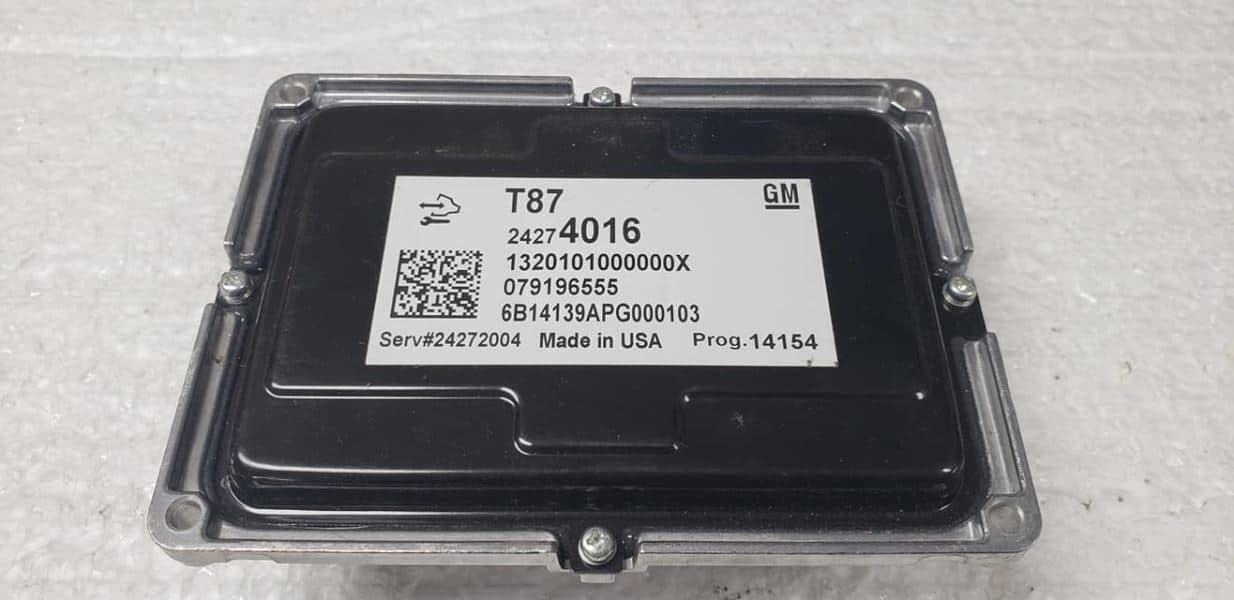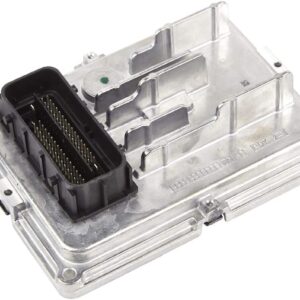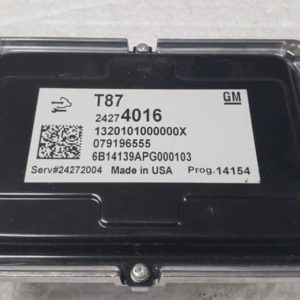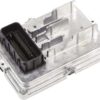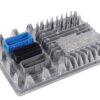Restore Flawless Shifting to Your GM Truck or SUV
As a technician with over two decades of experience under the hood, I’ve seen firsthand how a failing Transmission Control Module (TCM) can bring a powerful truck like your 2015-2016 Sierra Denali to its knees. The frustration of harsh, delayed, or unpredictable shifts isn’t just an annoyance—it’s a sign that the brain of your transmission is struggling. This VIN-programmed TCM, part number 24276411, is the direct, reliable solution to get your vehicle’s performance and drivability back to factory standards without an expensive trip to the dealership for programming.
The TCM is the central command for your automatic transmission. It processes data from engine and wheel speed sensors to determine the perfect moment to shift gears. When it fails, communication breaks down, leading to a host of problems that can mimic a major mechanical failure. We take the guesswork and extra cost out of the repair. Simply provide your vehicle’s VIN at checkout, and our experts will program this module with the latest official GM software specific to your truck. It arrives at your door ready for a straightforward installation, making this a job any confident DIYer or professional mechanic can handle with ease.
Is Your Truck Exhibiting These TCM Failure Signs?
- ✔ Unusually harsh or abrupt gear changes (slamming into gear).
- ✔ Delayed engagement when shifting from Park to Drive or Reverse.
- ✔ The transmission getting stuck in one gear (often called “limp mode”).
- ✔ A Check Engine Light with transmission-related Diagnostic Trouble Codes (DTCs) such as P0700, P0751, or U0100 (Lost Communication with TCM).
- ✔ Inconsistent shifting patterns that seem to have no rhyme or reason.
- ✔ Complete loss of transmission function or a no-start condition in some cases.
Case Study: The Ghost in the Transmission
A customer brought in his 2015 Sierra 1500 complaining of intermittent, violent downshifts when coming to a stop. He’d already spent a fortune on a transmission fluid and filter service at another shop, with no improvement. We scanned the truck and found a U0100 code that would appear and disappear. Instead of immediately recommending a costly transmission teardown, we focused on the electronics. On these GM trucks, the TCM is mounted on the core support, where it’s exposed to heat and vibration. After monitoring live data, we saw the TCM signal drop out intermittently, confirming our suspicion. We replaced it with a pre-programmed module just like this one. The installation took less than 30 minutes, and the truck’s shifting was immediately smooth and predictable. It’s a classic case where the right part, correctly programmed, saved the customer thousands in unnecessary repairs.
Your Straightforward Installation Guide
- ✔ Safety First: Disconnect the negative terminal from your vehicle’s battery and secure it away from the post to prevent accidental reconnection.
- ✔ Locate the TCM: On most Sierra/Silverado models, the TCM is mounted on the driver’s side of the radiator core support or fan shroud. It’s a silver metal box with large electrical connectors.
- ✔ Disconnect the Connectors: Carefully release the locking tabs on the electrical harnesses and pull them straight out from the module. Avoid pulling on the wires themselves.
- ✔ Remove the Old Module: Unbolt the old TCM from its mounting bracket. It’s typically held in place by a few small bolts (often 10mm).
- ✔ Install the New Module: Mount your new, pre-programmed TCM onto the bracket and secure it with the bolts.
- ✔ Reconnect Everything: Firmly plug the electrical connectors back into the new module until they click into place. Reconnect your negative battery terminal.
- ✔ Final Check: Start the vehicle and allow it to idle for a few minutes. Take it for a test drive to confirm that shifting is smooth and the check engine light is off. Because this module is pre-programmed, no further steps are required!
Verified Fitment Across the GM Lineup
This module is a direct replacement for part numbers 24276411 and 24272004, ensuring compatibility with a wide range of General Motors vehicles. Please verify your specific model and options below:
- Cadillac CTS: 2016
- Cadillac Escalade / ESV: 2015-2017 (8-speed, M5U)
- Chevrolet Camaro: 2016
- Chevrolet Silverado 1500: 2015-2016 (8-speed, M5U)
- Chevrolet Silverado 2500 / 3500: 2015-2016 (6-speed, MW7)
- GMC Sierra 1500: 2015-2016 (8-speed, M5U)
- GMC Sierra Denali 1500: 2015-2016
- GMC Sierra 2500 / 3500 (including Denali): 2015-2016 (6-speed, MW7)
- GMC Yukon / Yukon XL 1500: 2015-2016 (8-speed, M5U)
Frequently Asked Questions
Why do you need my VIN?
Your Vehicle Identification Number (VIN) allows us to load the exact, factory-correct software from GM for your specific vehicle. This ensures perfect communication between the engine and transmission and accounts for any mid-year production changes, guaranteeing optimal performance right out of the box.
Is this a plug-and-play part?
Yes! Because we program the module to your VIN before shipping, it is a true plug-and-play solution. You will not need to take your vehicle to a dealer or mechanic for expensive programming after installation.
Will this fix a P0700 trouble code?
A P0700 code is a general fault request from the TCM. While a failing TCM is a very common cause for this code, it’s essential to have the vehicle scanned for other specific transmission codes (like P07xx or Uxxxx) to confirm the diagnosis. In many cases, replacing the TCM will resolve the P0700 and its related codes.
What is the difference between this and a used module from a junkyard?
A used module from another vehicle is programmed to that vehicle’s VIN and options. It will not work correctly in your truck and can cause further issues. Our module is professionally programmed with clean, updated software specifically for your vehicle, ensuring a reliable, long-term repair.
Where is the TCM located on my 2016 Sierra Denali 1500?
For the 2015-2016 Sierra Denali 1500, the Transmission Control Module is typically located on the driver’s side (LH) of the radiator core support, near the front of the engine bay.
